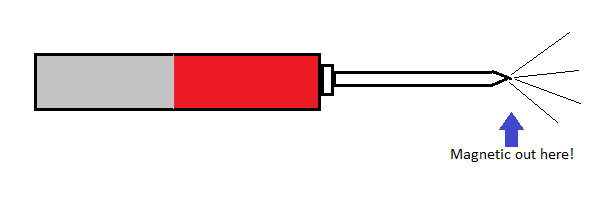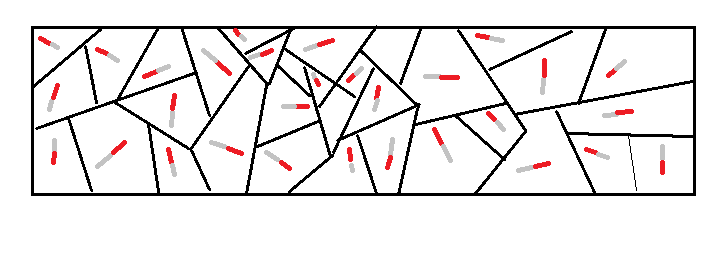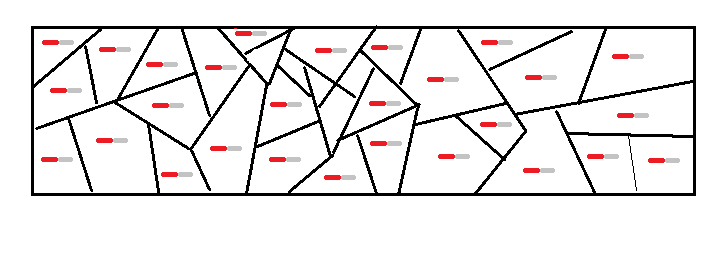Magnet Theory
Metals are made up of many tiny domains of magnetically aligned
groups of atoms. Some metals, mostly just iron and iron
alloys, allow for those groups of atoms to change their alignment
if subjected to a strong enough magnetic field. This is why
a magnet placed at one end of a nail will make the nail magnetic
at the far end, enough to pick up small paperclips from much
further away than the actual magnetic field of the magnet could
manage.

picture by Patrick Woolery
However, as soon as the magnet and nail are separated, the nail's
little magnetic domains go back to the chaotic mix that is their
natural state. In this state, all the different dipoles
serve to effectively cancel each other.

picture by Patrick Woolery
Fine and dandy, but so what, right?
Here's the big idea:
If a significant portion of those groups of atoms were to
permanently change their dipole alignment, the nail (or other iron
rod) would become a magnet permanently, not just while in contact
with a permanent magnet.
The commonly-suggested method of doing this is to hit it with a
hammer while it is aligned with a magnetic field. The idea
is that the force of the hammer will "jiggle" the tiny magnetic
domains, releasing them momentarily to realign with any available
strong magnetic field. The normally suggested field is the
Earth's magnetic field.

picture by Patrick Woolery
Here's
a common search for methods that will yield plenty of suggestions
along these lines.
I am unable to find any examples of videos that actually show it
being done, in spite of the plethora of web sites that claim it
does work.
Next Page
Previous Page
Index


